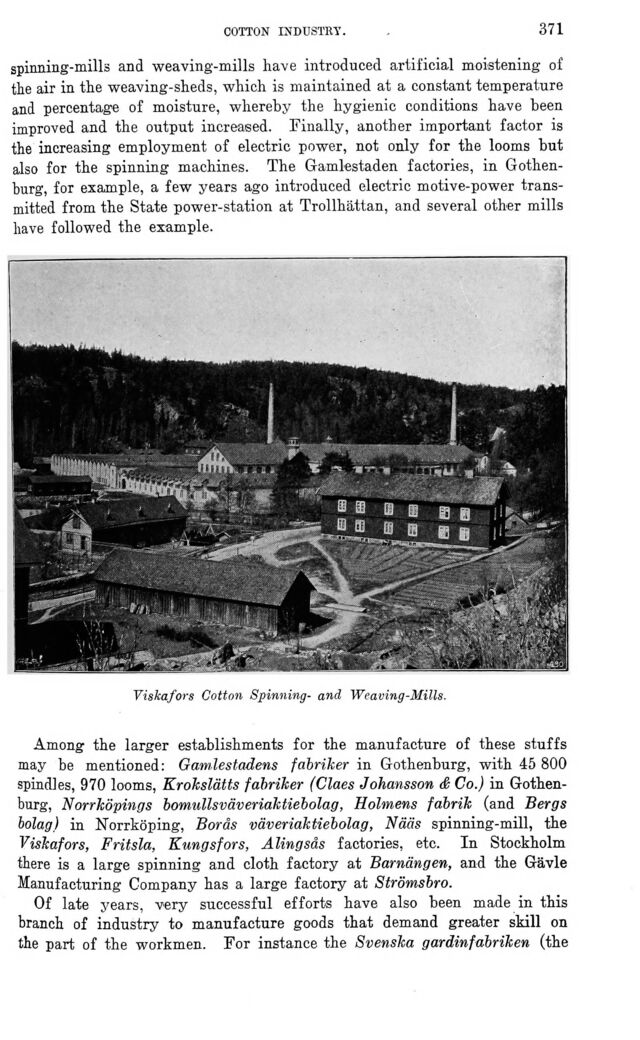
Full resolution (JPEG) - On this page / på denna sida - VII. Manufacturing Industries. Introd. by [G. Sundbärg] K. Åmark - 2. Textile and Clothing Industry. By G. Sellergren

<< prev. page << föreg. sida << >> nästa sida >> next page >>
Below is the raw OCR text
from the above scanned image.
Do you see an error? Proofread the page now!
Här nedan syns maskintolkade texten från faksimilbilden ovan.
Ser du något fel? Korrekturläs sidan nu!
This page has never been proofread. / Denna sida har aldrig korrekturlästs.
cotton industry.
371
spinning-mills and weaving-mills have introduced artificial moistening of
the air in the weaving-sheds, which is maintained at a constant temperature
and percentage of moisture, whereby the hygienic conditions have been
improved and the output increased. Finally, another important factor is
the increasing employment of electric power, not only for the looms but
also for the spinning machines. The Gamlestaden factories, in
Gothenburg, for example, a few years ago introduced electric motive-power
transmitted from the State power-station at Trollhättan, and several other mills
have followed the example.
Viskafors Cotton Spinning- and Weaving-Mills.
Among the larger establishments for the manufacture of these stuffs
may be mentioned: Gam,testadens fabriker in Gothenburg, with 45 800
spindles, 970 looms, Krokslätts fabriker (Claes Johansson & Co.) in
Gothenburg, Norrköpings bomullsväveriaktiebolag, Holmens fabrik (and Bergs
bolag) in Norrköping, Borås väveriaktiebolag, Nääs spinning-mill, the
Viskafors, Fritsla, Kungsfors, Alingsås factories, etc. In Stockholm
there is a large spinning and cloth factory at Barnängen, and the Gävle
Manufacturing Company has a large factory at Strömsbro.
Of låte years, very successful efforts have also been made in this
branch of industry to manufacture goods that demand greater skill on
the part of the workmen. For instance the Svenska gardinfabriken (the
<< prev. page << föreg. sida << >> nästa sida >> next page >>